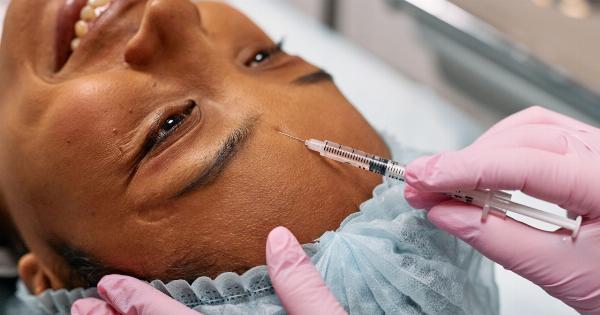Over the years, breast augmentation has become an increasingly popular cosmetic procedure for women looking to enhance their appearance and boost their self-confidence.
However, recent studies have raised concerns about a potential connection between breast implants and a rare form of cancer known as Anaplastic Large Cell Lymphoma (ALCL). While the overall risk is low, it’s important for individuals considering breast implants to be aware of the potential risks and make an informed decision.
Understanding Anaplastic Large Cell Lymphoma (ALCL)
Anaplastic Large Cell Lymphoma (ALCL) is a type of non-Hodgkin’s lymphoma, a cancer that affects the lymphatic system. ALCL is classified as either systemic or cutaneous, with the latter being more common.
However, the focus of concern currently lies on a specific variant of cutaneous ALCL known as Breast Implant-Associated Anaplastic Large Cell Lymphoma (BIA-ALCL).
BIA-ALCL is a relatively rare cancer that develops in the scar tissue and fluid surrounding breast implants. The symptoms of BIA-ALCL typically include swelling, pain, lumps, or asymmetry in the breasts.
In most cases, the cancer is found in individuals who have undergone textured breast implants rather than smooth implants.
The Research on Breast Implants and ALCL
In recent years, there has been an increasing amount of research focused on investigating the potential connection between breast implants and ALCL. The United States Food and Drug Administration (FDA) first reported a possible link in 2011.
Since then, numerous studies have been conducted to gather more data on the risk and prevalence of BIA-ALCL.
A study published in JAMA Oncology in 2017 analyzed data from 173 patients with BIA-ALCL. The researchers found that the cancer was more likely to occur in individuals with textured implants compared to those with smooth implants.
They estimated the risk of developing BIA-ALCL to be between 1 in 3,817 to 1 in 30,000 for textured implants.
Another study published in Plastic and Reconstructive Surgery in 2020 analyzed data from 115 confirmed cases of BIA-ALCL.
The researchers reported that the incidence of BIA-ALCL in individuals with textured implants was significantly higher compared to those with smooth implants.
Potential Causes and Mechanisms
The exact cause of BIA-ALCL is still not fully understood. However, researchers believe that the textured surface of implants may play a role in the development of the cancer.
The rough texture of these implants can lead to increased inflammation and immune responses, which may trigger the growth of cancer cells in some individuals.
There is also evidence to suggest that certain genetic factors may increase the susceptibility to BIA-ALCL.
Further research is needed to determine the precise mechanisms by which breast implants contribute to the development of this rare form of lymphoma.
Diagnosis and Treatment
If you have breast implants and are concerned about BIA-ALCL, it is important to be aware of the symptoms and seek medical attention if you experience any unusual changes in your breasts.
A thorough evaluation by a healthcare professional, including imaging tests and fluid analysis, can help diagnose BIA-ALCL.
If BIA-ALCL is detected, the treatment typically involves the removal of the breast implants and the surrounding scar tissue. In most cases, this is sufficient to eliminate the cancer.
However, in rare instances where the cancer has spread, further treatment such as chemotherapy or radiation may be necessary.
Minimizing the Risk
Although the risk of developing BIA-ALCL is relatively low, there are steps that individuals can take to minimize the risk. Firstly, it is important to choose a reputable and experienced surgeon for the breast implant procedure.
Surgeons who are well-versed in the latest techniques and protocols can help reduce the risk of complications.
Additionally, individuals considering breast implants should thoroughly research the type of implants they are considering. Smooth implants have been associated with a significantly lower risk of BIA-ALCL compared to textured implants.
Discussing the potential risks and benefits with a healthcare professional can also help individuals make an informed decision.
Conclusion
The potential connection between breast implants and Anaplastic Large Cell Lymphoma (ALCL) is a topic of ongoing research and concern.
While the overall risk is low, individuals considering breast augmentation should be aware of the potential risks and discuss them with a healthcare professional. Choosing a reputable surgeon and carefully considering the type of implants may help minimize the risk of developing this rare form of lymphoma.

























